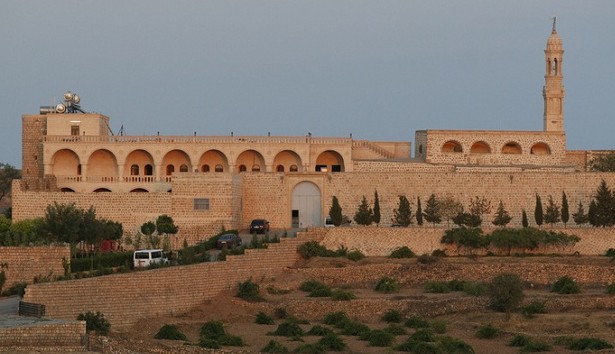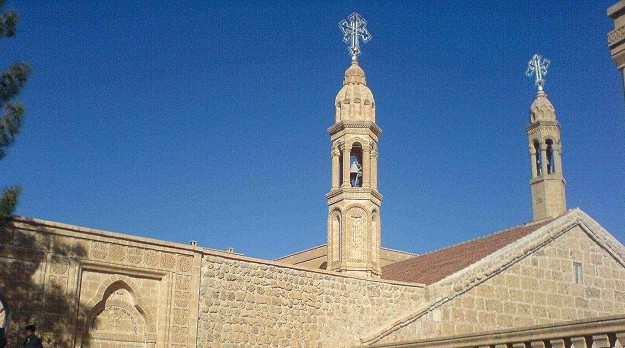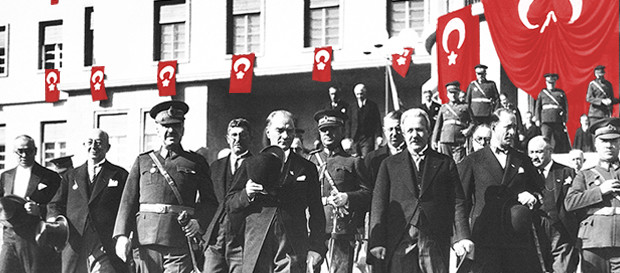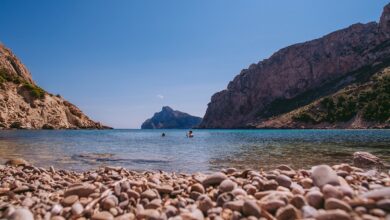Turkish Court Rules State Can Seize Assyrian Monastery’s Land
A court ruling that allows the state treasury to seize a large chunk of the land belonging to an ancient Assyrian monastery in southeastern Turkey is being described by critics of the decision as a major setback for Ankara’s efforts to reform the way non-Muslims and their property are treated in the country.
The ruling, by the Supreme Court of Appeals in Ankara, allows for close to sixty percent of the land belong to the centuries-old Mor Gabriel monastery to be expropriated by the state, on the grounds that the property belongs to the treasury rather than to the monastery, which has been in existence since the year 397 and has been a major center for Assyrian Christians since that time. The Bianet website has a quick rundown of the case:
The heads of three villages in Mardin’s Midyat district filed a complaint with the Treasury in 2008 during cadastral [land registration] work in the area on the grounds that the monastery was occupying 276 decares [100 acres] of territory owned by local villagers.
The treasury filed a “land registration” suit, and the court subsequently dismissed the case, arguing that the church had been in possession of the estates in question since archaic times, that it had declared its estates prior to the 1936 Proclamation and had been paying its taxes on a regular basis after 1937.
The treasury then proceeded to appeal the decision, and the 20th Section of the Supreme Court of Appeals subsequently claimed the defendants had not presented any tax records pertaining to their real properties despite the earlier court statement that the church had been paying its taxes since 1937.
The Supreme Court of Appeals further argued the defendant parties had not presented any documents regarding their declaration to the Foundations Directorate General in 1936.
The monastery responded by indicating they had already presented the relevant documents in 2009 and attached them to the file once more, but to no avail.
The case (which was the subject of a more extensive 2009 article in the Wall Street Journal) has caught the attention of the European Union, which has expressed “serious concern” about the recent court ruling. For human rights activists, the fact that the treasury pursued this case so vigorously is being seen as a worrying indication that the Turkish state could be reverting to some bad habits regarding its treatment of non-Muslims, particularly when it comes to property rights. Writes human rights lawyer Orhan Kemal Cengiz
When the Treasury appealed against the decision by the court of first instance, the first shocking decision came from the Supreme Court of Appeals, which says the monastery has no document proving its ownership of the land. The monastery this time requested a “decision correction” from the Supreme Court of Appeals and this time included all the documents on which the court of first instance based its decision. Nothing, however, has changed; the Supreme Court of Appeals declared again that the Treasury is the rightful owner of these lands.
This is exactly the same Supreme Court of Appeals which deprived non-Muslim foundations of all their properties before. Seeing non-Muslim citizens as “indigenous foreigners,” a term once used by it, is embedded in its genes. However, the other part of the story needs quite a serious explanation. How can this government, after developing all these minority-friendly policies, be the architect of such a deeply embarrassing action against our handful of Aramean citizens and their ancient church?
What makes the court and treasury action against the monastery all the more dissapointing is that it actually comes in the midst of a slow revival of Assyrian life in southeastern Turkey — the ancient Christian community’s historic heartland — after decades of decline. Among the more positive developments to have taken place in recent years have been the launching of a new Assyrian newspaper in the city of Mardin, located near the Mor Gabriel monastery, and the reopening of two long-closed churches by Assyrians who had returned to the region after living in Europe.
History in Mor Gabriel Monastery
The Mongolians failed to destroy it 700 years ago despite the massacre of 40 friars and 400 Christians. Yet the existence of the oldest functioning Christian monastery in the world, the fifth century Mor Gabriel Monastery in the Tur Abdin plane (“the mountain of God’s servants”) near the Turkish-Syrian border, is at risk after a ruling by Turkey’s highest appeals court in Ankara.
Founded in 397 by the monks Samuel and Simon, Mor Gabriel in eastern Anatolia has been the heart of the Orthodox Syrian community for centuries. Syriacs hail from a branch of Middle Eastern Christianity and are one of the oldest communities in Turkey.
Today the monastery is inhabited by Mor Timotheus Samuel Aktash, 3 monks, 11 nuns and 35 boys who are learning the monastery’s teachings, the ancient Aramaic language spoken by Jesus and the Orthodox Syriac tradition.
Although the monastery is situated in an area at the centre of conflicts between Kurdish separatist with the armed PKK group and the Turkish army, Mor Gabriel welcomes 20,000 pilgrims every year.
The Syriac Orthodox community – estimated to be 2.5 million across the world – is under the authority of the Patriarch of Antioch and considers the monastery a “second Jerusalem.”
The monastery’s reputation 1,500 years ago was such that Roman Emperors Arcadius, Theodosius and Onorio built new buildings around it and enriched it with art and mosaics. But in the past 150 years Mor Gabriel has gone through a decline after the massacres of Christians by nationalists at the end of the 19th century – 3,000 Christians were burnt to death in Edessa’s Cathedral in 1895 – and clashes between Turks and Kurds in the area during World War I.
In the mid 1960s the community in Tur Abdin numbered 130,000.
Today only 3,500 people are left and the ‘second Jerusalem’ is in danger. The heads of the three neighbouring Muslim villages, Kurds with the Belebi tribe, filed a lawsuit against the monastery years ago with the support of an MP member of the Islamic Justice and Development Party (AKP) of Prime Minister Recep Tayyip Erdogan.
Under the lawsuit, the Syriacs are accused of practicing “anti-Turkish activities” by providing an education to young people, including non-Christians, and of illegally occupying land which belongs to the neighbouring villages.
After a number of contrasting verdicts, the highest appeals court in Ankara, which is close to the government, has ruled in favour of the village chiefs and said the land which has been part of the monastery for 1,600 years is not its property.
The lawsuit also claimed that the sanctuary was built over the ruins of a mosque, forgetting that Mohammed was born 170 years after its foundation.
The verdict has been slammed by the Turkish media and Zaman wrote that the judges had “lost” property and fiscal documents “proving that the land in question belongs to the monastery.”
Mor Gabriel now needs to appeal to the European Court of Human Rights in order to survive, a move already undertaken with success a few years ago by the Greek Patriarch of Constantinople to re-obtain the building housing the Orthodox orphanage of Buyukada in Istanbul.
[adrotate banner=”33″]




I am very sorry to read about this injustice against the ancient Monastry. I trust that truth and Justice will prevail and Peace be restored.